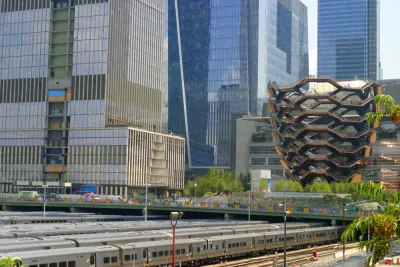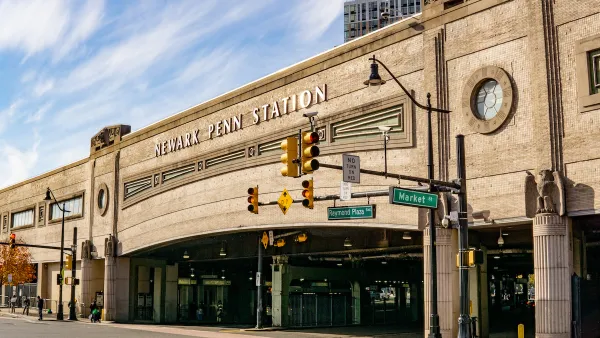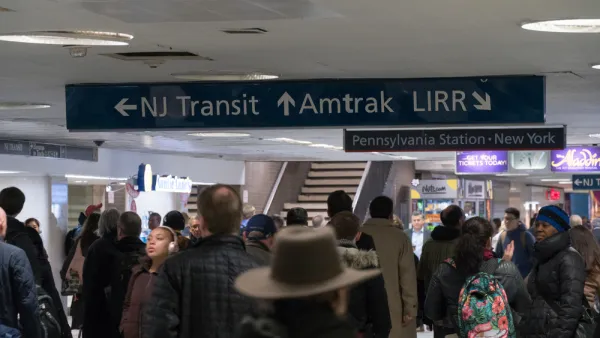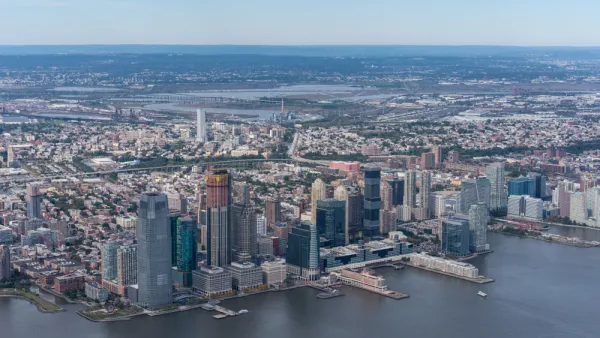Considered by some to be the most critical infrastructure project in the country, the Gateway Project is an ongoing example of the extreme costs of bureaucratic and political neglect.

The Gateway Development Commission, tasked with managing the Gateway Program to develop new capacity for the Northeast Corridor between Newark, New Jersey and Penn Station in New York City, announced at the end of August that the project will open three years later than expected and cost $2 billion more to construct.
Officials blamed some of the delay and expense on “market volatility and inflation,” according to an article by Dana Rubinstein for the New York Times. “The commission hopes to make up much of the cost difference with funding from the federal infrastructure law passed last year. The remaining cost overrun will be split between New York and New Jersey and the federal government.”
The news is only the latest unwelcome development in the long saga of the Gateway Program. Since the Biden administration took office, the news has generally been good—funding approval for the Portal Bridge and a $14 billion funding agreement between the states of New Jersey and New York. The last time Planetizen picked up news of time and money being added to the project timeline was in September 2020.
Rubinstein includes a discussion of the high costs of transit infrastructure investments in the article, citing Eric Goldwyn, director of the Transportation and Land-Use program at the N.Y.U. Marron Institute, to explain how expensive is the project compared to other projects in the country and world. The Marron Institute produced the first study on the high cost of transit in 2021.
FULL STORY: Commuter Tunnel Under the Hudson Won’t Be Finished Until 2035

National Parks Layoffs Will Cause Communities to Lose Billions
Thousands of essential park workers were laid off this week, just before the busy spring break season.

Retro-silient?: America’s First “Eco-burb,” The Woodlands Turns 50
A master-planned community north of Houston offers lessons on green infrastructure and resilient design, but falls short of its founder’s lofty affordability and walkability goals.

Delivering for America Plan Will Downgrade Mail Service in at Least 49.5 Percent of Zip Codes
Republican and Democrat lawmakers criticize the plan for its disproportionate negative impact on rural communities.

Test News Post 1
This is a summary

Test News Headline 46
Test for the image on the front page.

Balancing Bombs and Butterflies: How the National Guard Protects a Rare Species
The National Guard at Fort Indiantown Gap uses GIS technology and land management strategies to balance military training with conservation efforts, ensuring the survival of the rare eastern regal fritillary butterfly.
Urban Design for Planners 1: Software Tools
This six-course series explores essential urban design concepts using open source software and equips planners with the tools they need to participate fully in the urban design process.
Planning for Universal Design
Learn the tools for implementing Universal Design in planning regulations.
EMC Planning Group, Inc.
Planetizen
Planetizen
Mpact (formerly Rail~Volution)
Great Falls Development Authority, Inc.
HUDs Office of Policy Development and Research
NYU Wagner Graduate School of Public Service





























